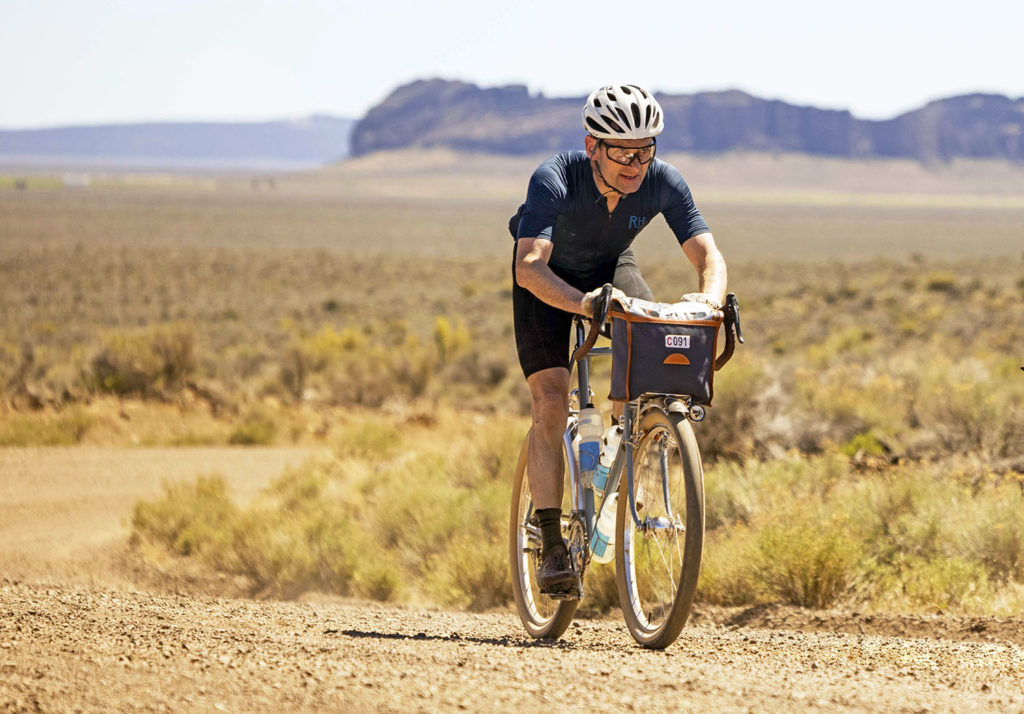85 Years of Rene Herse Cycles

Performance and Adventure since 1938
Our founder, René Herse, was called the “Magician of Levallois,” after the suburb of Paris where his workshop was located. Starting in 1938, he made innovative components and bikes that won national and world championships. They were ridden in adventures all over the world. The passion and vision of René Herse continue to inspire us as we craft high-performance tires and components for today’s riders and racers.
Early Years
René Louis Théodore Herse was born on January 4, 1908. We know little about his early years. His mother died in childbirth. His father was killed during World War I, when René was six years old. “He didn’t like to talk about his youth,” remembered his daughter Lyli. A newspaper article mentions that, at age 15, he won a 60 km youth race organized by the Aero-Sport club in Versailles near Paris (photo). By the late 1920s, he was a well-known racer in the ‘inter-club’ competitions in Paris.

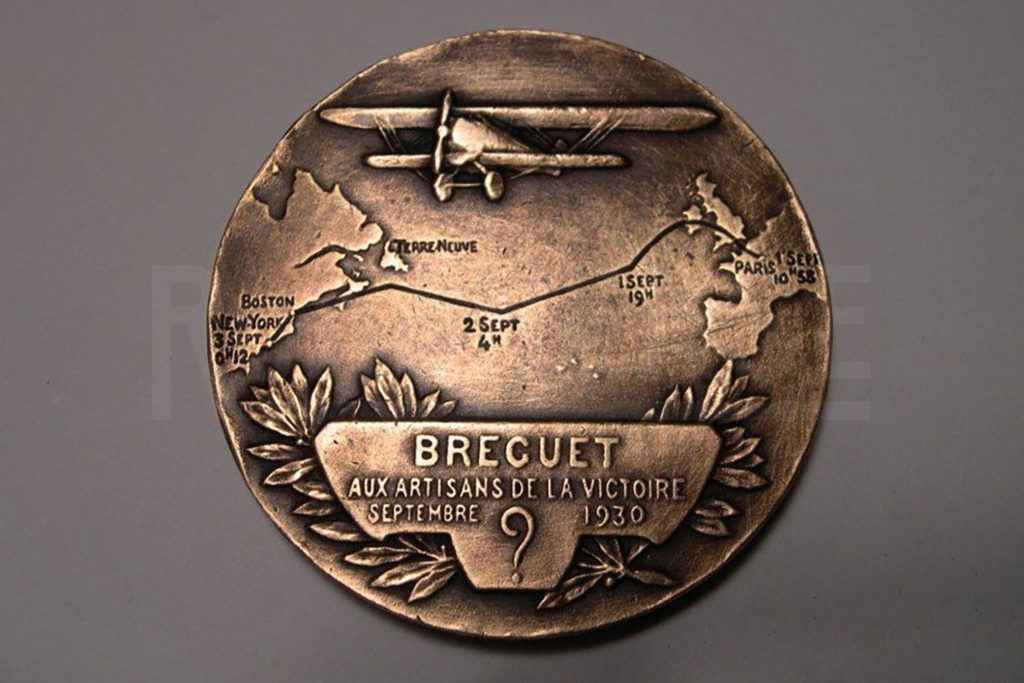
Aircraft Technology
By 1930, René Herse worked at the Breguet aircraft factory. His job was to fabricate parts for prototype aircraft. He worked on the famous ‘Point d’Interrogation’ (Question Mark), the first plane to fly from Paris to New York and traverse the Atlantic Ocean against the powerful winds of the jet stream. Twenty previous attempts had all ended in failure, but the Question Mark succeeded in an epic 37-hour non-stop flight. All his life, René Herse treasured the medal that he got for his work on this groundbreaking plane.
First René Herse Components
In 1938, René Herse left Breguet and started to make bike components, applying aircraft technology to cranks, brakes, stems and pedals. Herse burst onto the cycling scene at the prestigious Concours de Machines, a competition for the best all-road bike. Working with the famous builder Narcisse, Herse presented the lightest bike in the history of this event: Fully equipped with fenders, lights, rack and even a pump, this amazing machine weighed just 7.94 kg (17.50 lb) – almost 1 kg (2 lb) lighter than all other bikes at the Concours. Herse was a strong rider, and his new components performed flawlessly. After this successful introduction, Herse began production of his components.


Complete Bikes
At first, René Herse worked alone in a small basement workshop, where he made his components by hand. After the German army invaded Paris in 1939, skilled metalworkers were deported to work in armament factories. Many went into hiding. Herse ran a clandestine workshop to employ friends and members of his cycling club. He started to make complete bikes that were equipped with his components.
World War II
During the German occupation, food was scarce in Paris and the surrounding countryside. Randonneurs cycled long distances to smuggle food into the city, riding on small gravel roads to evade detection. Cycling clubs became support networks. Competitions in the city replaced long voyages, and also allowed meeting without arousing the suspicion of the occupiers. Paulette Callet, one of Herse’s first customers, remembered: “The sporting events offered at least a temporary distraction from the hardship of the times.”
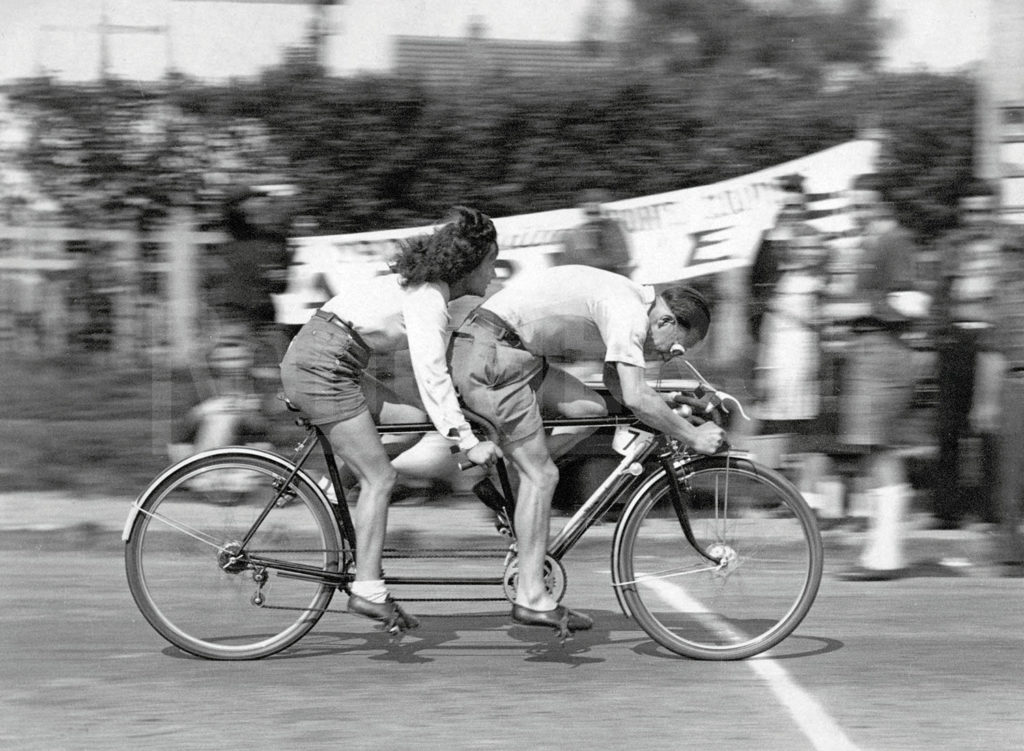
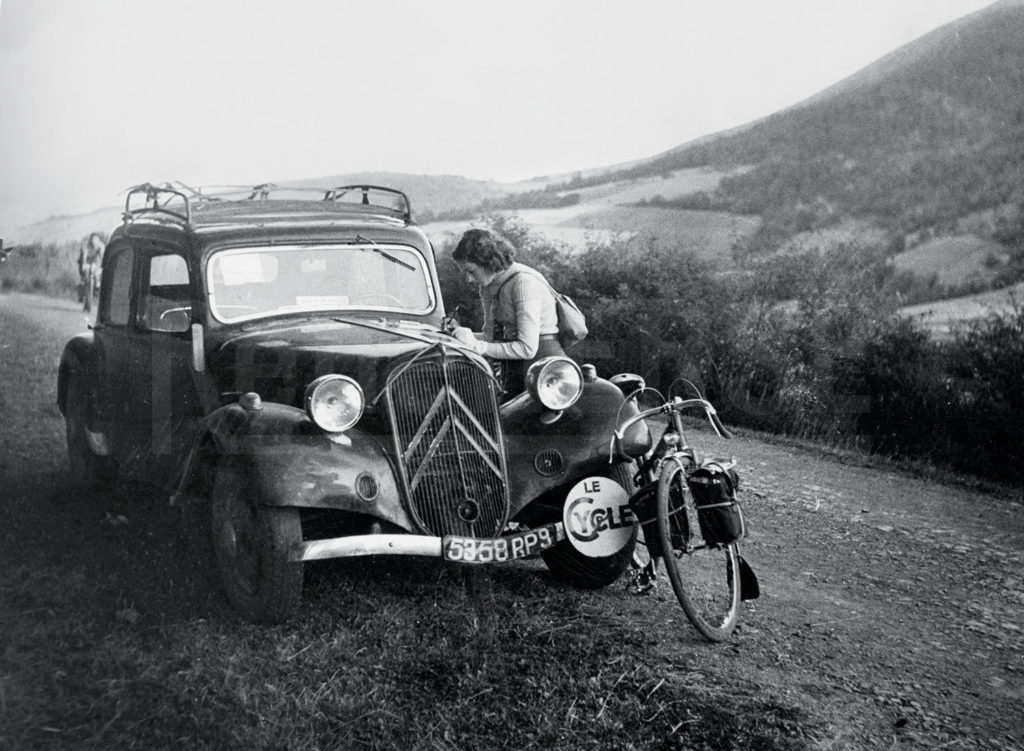
Touring and Competition
After the war, cycling was more popular than ever in France. Cyclotourists enjoyed riding in the mountains. The Concours de Machines led to lighter bikes and better technology. Randonneur brevets and competitions, originally a response to the war-time curfews and travel restrictions, continued to be popular. René Herse’s bikes excelled in these demanding rides and competitions.
Paris-Brest-Paris
Even by the standards of cycling’s heroic age, Paris-Brest-Paris was a race of epic proportions. Since 1891, racers had ridden non-stop from Paris to the westernmost city in France and back, a distance of 1200 km (750 miles). By the 1950s, the pros lost interest, but randonneurs took up the challenge. For many, the goal was simply to finish. At the front of the pack, the ride still resembled a race, and the records set on René Herse’s bikes and tandems stood for many decades.
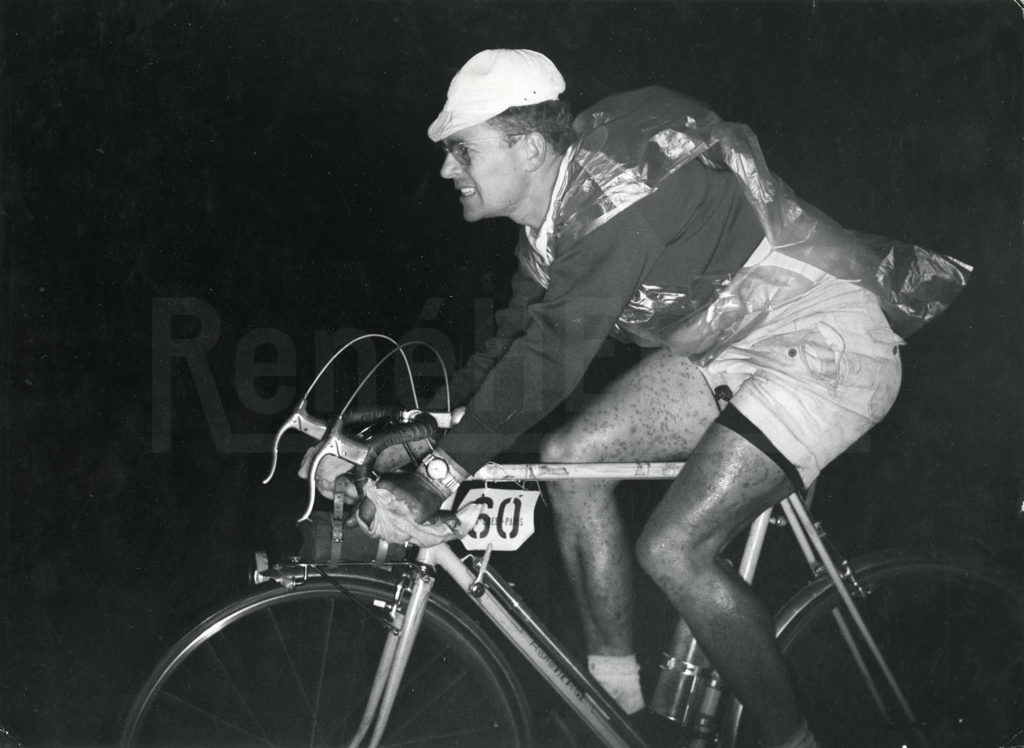
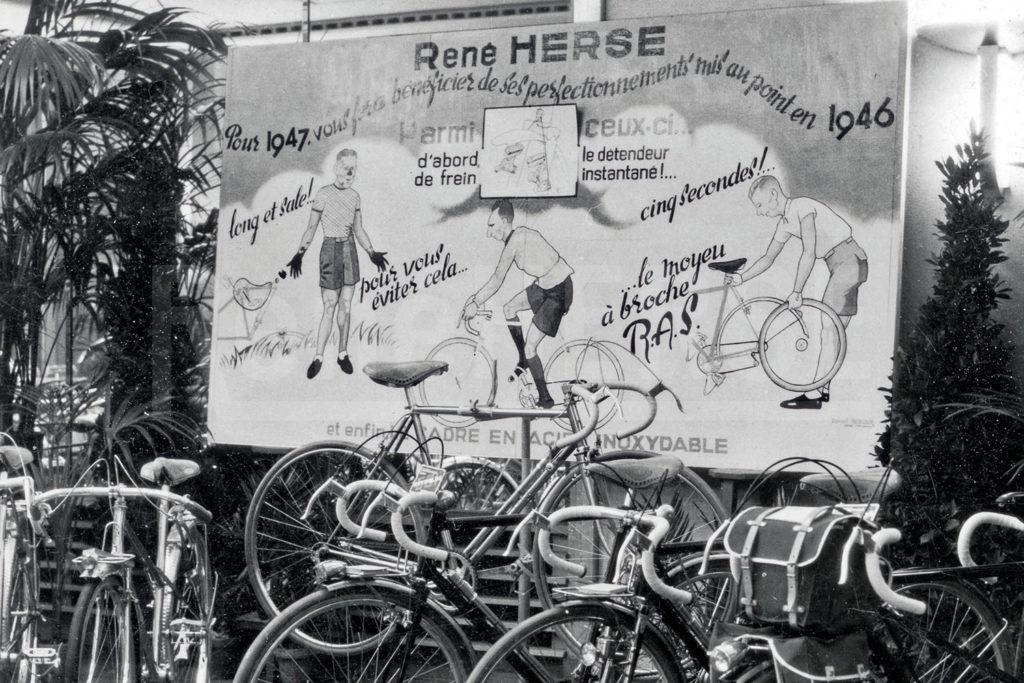
Innovation
René Herse continued to improve his bikes. He invented bottom brackets with sealed bearings and innovative lighting systems. In 1946, he introduced a thru-axle rear hub with a cassette that remained attached to the frame. The wheel could be removed without touching the chain. Less successful was Herse’s stainless steel frame, presented the same year. Prototypes were tested on the road and in the lab, and the bike was presented to the public. But the prototypes appear to have developed problems, and no stainless steel bikes were ever sold.
8 Times French Champion
René Herse is best-known for his randonneur and all-road bikes, but he also built racing frames for many great champions: Louison Bobet, Briek Schotte, Robert Oubron and others came to the shop to have their bikes built. The frames were painted in their sponsors’ colors, but the unique features of René Herse’s frames show who built them, and the racers’ names appear in the order books.
Herse’s daughter Lyli was a very strong racer, too: She won eight French championships from 1958 to 1967. She recalled: “When you won a race, you got a bouquet of flowers. I enjoyed giving the flowers to my mother.”


Exports to Japan and USA
As cars became affordable in France, bicycle builders struggled during the 1950s and 1960s. Exports replaced domestic orders as René Herse’s bikes were discovered by American and Japanese cyclotourists. The Herse family developed many friendships with their customers. They were especially close to the Bruce family from Chicago (left), who came to tour in France and invited Lyli Herse to the United States.
World Champion
After retiring from racing, Lyli Herse was approached by young racers who asked for training advice. Lyli’s protégées continued her winning ways, racking up French and even world championships.
Geneviève Gambillon won the worlds in Gap (France, 1972) and Montreal (Canada, 1974) against strong opposition from British, Russian and U.S. riders. She recalled: “I had two René Herse road bikes that were supposed to be identical, but one was my favorite. I won all my big races on it. It had a certain something that no other bike I’ve ever ridden could match.”
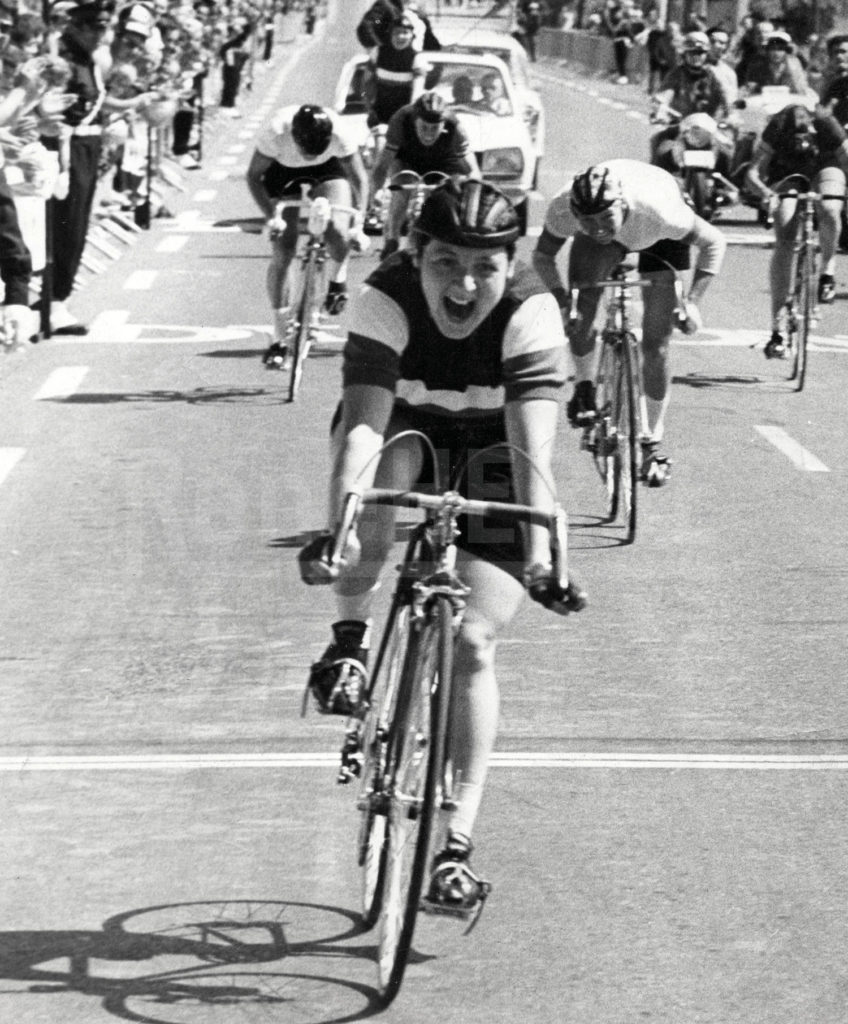

The Next Generation
In 1976, René Herse died after a short illness, followed by his wife Marcelle two years later. They left the shop to their daughter Lyli and her husband, Jean Desbois, who had been Herse’s best framebuilder since the earliest days. They continued the René Herse tradition of innovative technology: At the 1981 Salon du Cycle in Paris, Lyli and Jean presented the lightest bike of the show. With a steel frame, it weighed less than 7 kg (15.4 lb) – close to the limit imposed decades later by the UCI, for carbon bikes.
Last Classic René Herse
Lyli and Jean continued to build the famous bikes, updated in details to keep up with current trends, until they decided to retire in 1986. When the news spread, customers rushed to order one last bike. Lyli and Jean worked for two more years to fill these orders. To the very end, every René Herse stood out from the crowd with meticulous workmanship and innovative solutions.


Reborn in the Cascade Mountains
During the early 2000s, Jan Heine became interested in René Herse as he searched for bikes and components suitable for the gravel roads that he and his friends were discovering in the Cascade Mountains. He became friends with Lyli Herse and Jean Desbois. Together with Herse’s riders and employees, they taught him the secrets of making René Herse bikes and components. A few years later, Jan had the opportunity to acquire the Rene Herse brand, together with many tools and the company’s archives. That is how Rene Herse Cycles was reborn in Seattle (USA) at the foot of the Cascade Mountains.
The Legend Continues
Rene Herse Cycles continues to push the performance envelope. Our tires and components have become the choice of racers and adventurers all over the world, ridden to first places in the incredible Silk Road Mountain Race in Kyrgyzstan, the Tour Divide that traverses the Rocky Mountains from Canada to Mexico, and in ultra-competitive gravel races like Unbound, The Mid South and SBT GRVL. They’ve set FKTs (Fastest Known Times) in the Oregon Outback (right) and the Arkansas High Country Race, and – just as importantly – they are enjoyed on unhurried rides to places far off the beaten path.
For the complete story of the ‘classic era’ of Rene Herse Cycles, check out our book René Herse • The Bikes • The Builder • The Riders.
